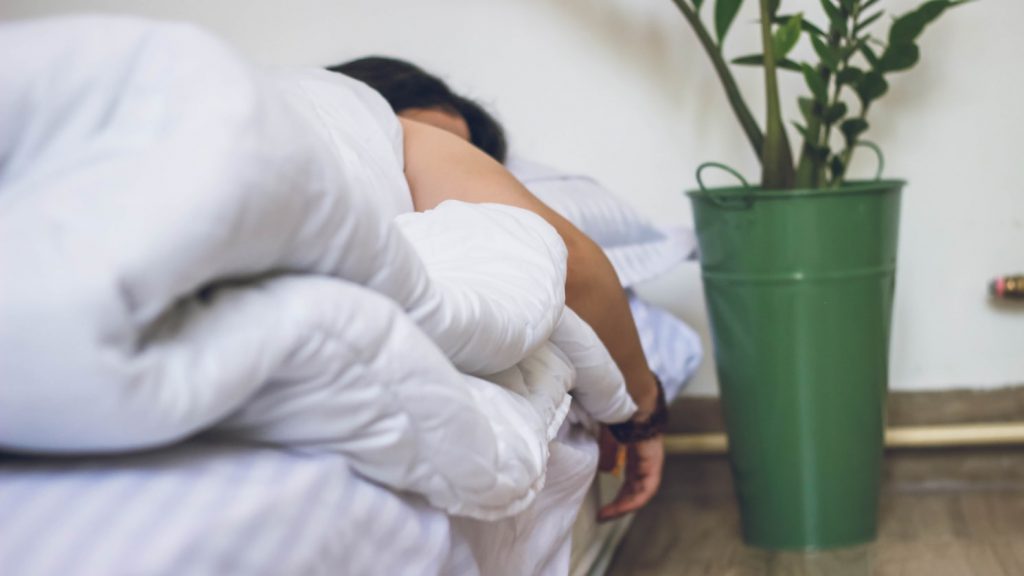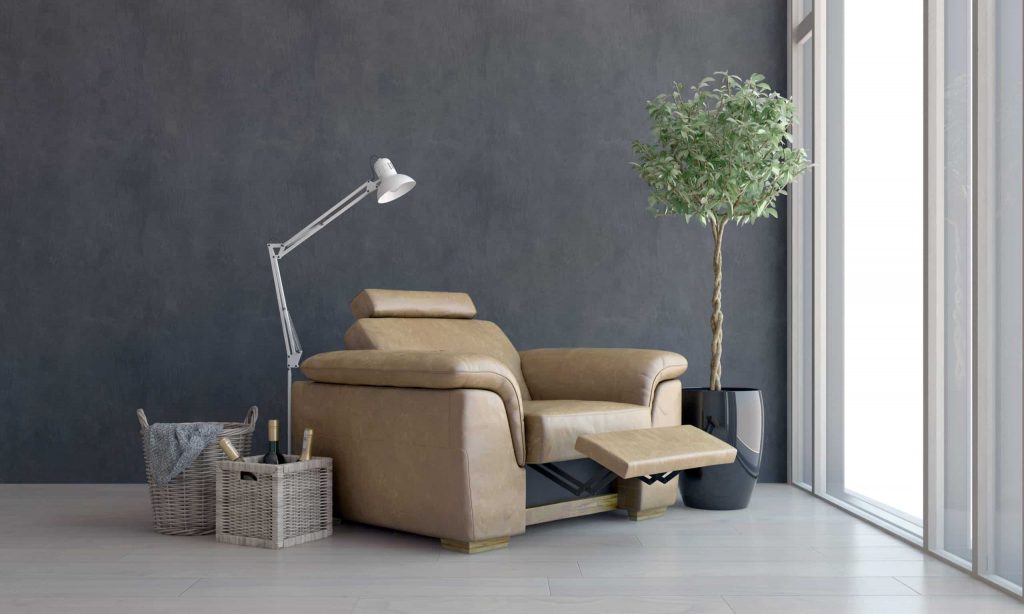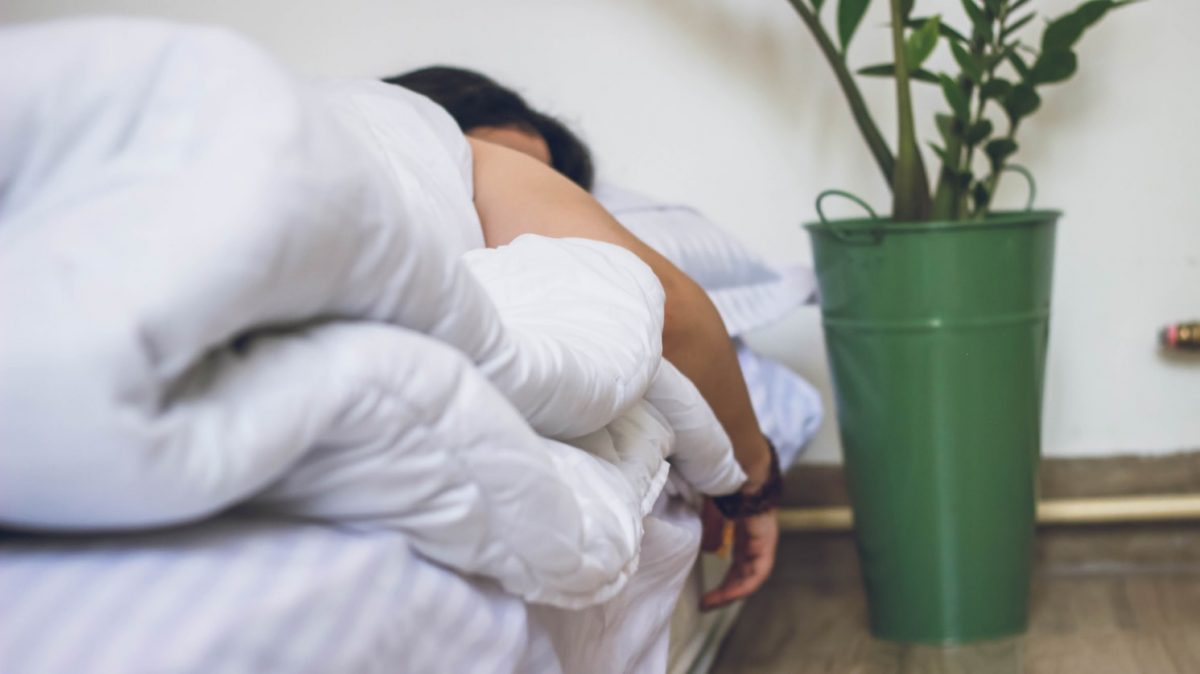- Back Pain Conditions
- Positions for Sleeping with Back Pain
- Tips for Sleeping with Back Pain
- Get a Good Night’s Sleep

The Georgetown Health Policy Institute says that approximately 65 million Americans report a recent back pain episode, and approximately 16 million suffer from chronic back pain. Back pain affects the ability to work and to participate in normal life activities. Getting regular good sleep is important to health in many ways, including the healing process. Back pain to due conditions like a herniated disc and spinal stenosis can make a good night’s sleep hard to achieve.
Back Pain Conditions
Back pain is caused by a variety of conditions that all have one thing in common. It is hard to sleep because every position seems to cause great discomfort. In fact, just getting in and out of bed can be a painful experience. Back pain can be temporary when due to something like a herniated disc that needs time to heal or chronic when suffering from a disease like osteoporosis.
Though back pain can develop anywhere along the spine and in the back muscles and other supporting tissues, The National Institute of Neurological Disorders and Stroke (NINDS) says that the lower back is where people experience back pain most often. The NINDS also says that most acute low back pain is due to mechanical issues, referring to the way the back’s components fit together and move – spine, spinal discs, muscles, and nerves.
There are dozens of reasons lower back pain develops. A person may be born with a spinal irregularity or have a non-spine issue like fibromyalgia. However, millions of people suffer from back pain due to degenerative problems, like disc degeneration, and nerve and spinal cord problems, like spinal stenosis and herniated disc. No matter the medical issue, sleeping with back pain is challenging.
Positions for Sleeping with Back Pain
It is bad enough to have back pain, but the wrong sleep position can actually lead to more pain. You may twist the spine or place more stress on the spine. The best positions maintain the spine’s natural curvature and alignment while also relieving pressure on the spine. The following are a few examples.
Herniated Disc
A herniated disc is a crack in the cartilage that surrounds the gel-like softer inner cartilage. The inner cartilage then protrudes out of the disc. The herniated disc position influences the sleeping position. Herniated discs can develop in the cervical, thoracic, and lumbar spinal regions. By far, the two most common areas are in the cervical and lumbar regions.
- Cervical herniated disc
Sleeping on your side can relieve pressure in your neck. It is important to use a pillow with a height that keeps the spine in alignment from neck to lower back. You should limit the number of pillows. Also, placing a pillow between the knees can relieve pain in the hips that sometimes develops from side sleeping.
- Lumbar herniated disc
Herniated discs are most commonly located in the lower back. The best herniated disc sleeping position is usually sleeping on your back. This position keeps the spine in alignment. If the pain persists, you can place a pillow under the lower back and knees to ease the pressure placed on the spine.
Spinal Stenosis
Spinal stenosis is a narrowing of the space within the spine which frequently puts pressure on the nerves that run through the spine. It most often occurs in the neck or lower back. There are two recommended spinal stenosis sleeping positions.
1. On the side
To relieve pressure on the compressed nerve, sleep on your side with the knees curled up towards the chest. This is called the fetal position.
2. In a reclining chair
Sleeping in a recliner for lower back pain is often the most comfortable choice. Sleeping in a recliner keeps the knees and head elevated. This position can relieve pressure placed on the nerve causing the pain. It is also helpful for sleeping with spinal stenosis in the cervical spine.

Bulging Disc
A bulging disc is when the outer tough cartilage of the disc bulges, but the disc does not rupture. The recommendations for the best sleeping position for a bulging disc is the same as those for a herniated disc.
Tips for Sleeping with Back Pain
The following are some tips to keep in mind to increase the likelihood of getting a good night’s sleep with back pain.
- Sleeping on the back or side or in a recliner can relieve back pain, and sometimes you simply need to choose the one that is most comfortable for you. Whichever position you choose, the goal is to maintain the natural curvature of the spine as much as possible and/or to relieve pressure on the nerve in the painful area.
- Sleeping on your stomach can cause more pain because it places more strain on the ligaments, muscles, and vertebrae in the neck and increases the arch in the lower back. It is not recommended.
- Pillows play a big role in managing back pain at night. Too many pillows will create a bend in the cervical spine, throwing it out of alignment. Pillows that are too high will also throw the spine out of alignment.
Consider your height and weight when choosing a pillow. When sleeping on your side, a firmer pillow should completely fill the space between the mattress and neck. If placing pillows between the knees or under the back, use a thin pillow.

There are many special pillows available today, like the herniated disc pillow. Pillows are designed for side sleepers and back sleepers and have ergonomic shapes. They are made with different types of materials too, but memory foam is the type of material most often recommended by SleepFoundation.org. It is firm material while still able to mold to the shape of the head and the curve of the neck.
Since the type, shape, and size of the pillow is so important to getting a good night’s sleep with back pain, you should consult your physician as to the best design for your situation.
Just as important as the pillow is the mattress. A saggy old mattress or a mattress that is too soft can aggravate back pain and the medical condition. The mattress needs to provide the right support for your back.
The best mattress for a herniated disc in the back is a firm mattress made of memory foam or latex. Like the pillow, consider your weight and height when selecting a mattress. If unable to purchase a new mattress, try placing a foam mattress topper on the mattress.
Get a Good Night’s Sleep
Trying to get a good night’s sleep while suffering from back pain is frustrating. You may have to experiment with the different sleeping positions or try sleeping in a recliner to find the best option. Add a well-designed pillow and a firm mattress, and your chances of getting the sleep you need are much more likely. If you have any questions, be sure to consult your doctor.
